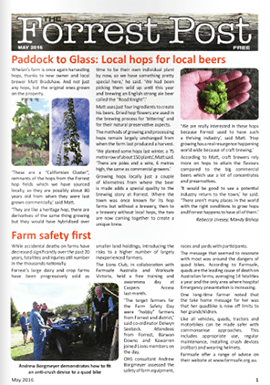About Forrest, Victoria
Forrest is a small rural township known as the ‘Gateway to the Otways’, with a permanent population of around 200. However, many weekenders own houses in the town and form an important part of the community. Forrest has a proud logging and milling history which, along with dairying, was the lifeblood of the town.
Forrest has been reborn as a tourist destination for those who want to get close to nature and engage in a variety of recreational and nature-based activities. The major tourism boom has come off the back of the world-class mountain bike trails on our doorstep. Each year those bike trails attract thousands of Australian and overseas visitors to compete in and watch professional races and events. As the ‘Gateway to the Otways’, we are surrounded by beautiful rainforest which provides a long list of things to do in Forrest. Nature walks, hiking trails, walking tracks, Lake Elizabeth platypus tours, Otway Eco Tours, and even Forrest photography tours are among the nature-based activities available. Along with Lake Elizabeth, the nearby Stevensons Falls is also a tourist drawcard.
Forrest is a diverse community, with our residents renowned for their warm and welcoming nature. We have an outstanding commitment to volunteering and have many active community groups. Historically, Forrest’s location is the intersection of four Aboriginal tribal lands.
Business, particularly tourism and hospitality based, continues to grow in Forrest with high-quality restaurants, cafes and a brewery. To cope with the increased visitation, Forrest accommodation options have also increased. Forrest also has a unique school, providing services from birth to grade six, drawing children and their families from across the region into the town.
History
The earliest inhabitants of the area now known as Forrest were from the Gadubanud and Gulidjan language groups, who moved along trading routes and story lines in the area. Many Aboriginal heritage places are registered in the area and some local Aboriginal family groups trace their heritage to before European settlement in the 1830s. Forrest...
Read more


